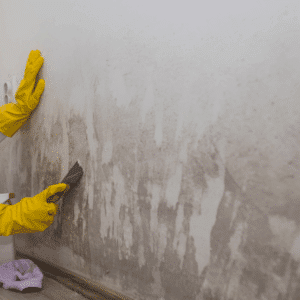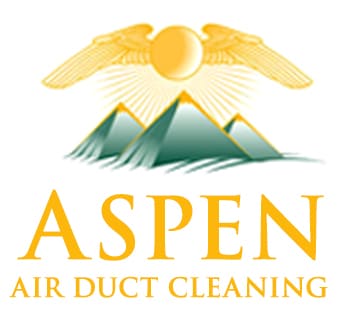When History Turns Humid: Solving Mold Issues in Boston’s Historic Buildings
 Boston is known for its rich history, cobblestone streets, and centuries-old architecture. But while historic homes and buildings offer charm and character, they also present a unique challenge - humidity and mold growth. As the fall season arrives, cooler nights and damp weather can create the perfect environment for mold to thrive, especially in older structures with less modern moisture control.
Boston is known for its rich history, cobblestone streets, and centuries-old architecture. But while historic homes and buildings offer charm and character, they also present a unique challenge - humidity and mold growth. As the fall season arrives, cooler nights and damp weather can create the perfect environment for mold to thrive, especially in older structures with less modern moisture control.
At Aspen Air Duct Cleaning, we understand how important it is to preserve the integrity and safety of Boston’s historic properties while protecting the health of those who live and work in them. Let’s explore why mold is such a concern in these treasured spaces and how to keep it under control this fall.
Why Historic Buildings Are Prone to Humidity Problems
Unlike modern buildings, which often include vapor barriers, insulated foundations, and advanced ventilation systems, historic structures were built differently. Their materials and designs - beautiful as they are - make them especially vulnerable to moisture issues.
Common causes of humidity in older buildings include:
- Stone and Brick Foundations: These materials absorb and release moisture, allowing dampness to seep into basements and crawlspaces.
- Poor Ventilation: Many historic buildings lack proper air circulation, causing trapped humidity.
- Aging Roofs and Windows: Small leaks can introduce water into walls or attics, going unnoticed until mold appears.
- Seasonal Weather Changes: In fall, cooler air meets warm interior air, leading to condensation on walls, windows, and pipes.
All of these factors create the perfect environment for mold growth, especially in places you don’t normally check - behind walls, in attics, and inside air ducts.
The Risks of Mold in Historic Homes and Buildings
Mold isn’t just a cosmetic issue; it can have serious consequences for both health and property.
- Health Risks: Mold spores can trigger allergies, asthma, and other respiratory issues. In historic buildings, where people may spend long hours (offices, museums, schools), this risk multiplies.
- Damage to Materials: Mold eats away at wood, plaster, and paper-based materials commonly found in older construction, causing costly structural damage.
- Preservation Concerns: Left untreated, mold can damage irreplaceable features like wooden beams, original flooring, and antique plaster walls - reducing the historic value of the property.
This makes mold prevention and removal not just a matter of health, but of preserving history.
How Fall Weather Makes the Problem Worse
Autumn in Boston brings chilly nights and damp days, creating a unique challenge for historic properties:
- Condensation: Warm air inside meets cold surfaces, creating moisture that feeds mold colonies.
- Closed Windows: Reduced ventilation traps humidity, allowing mold spores to spread more easily.
- Leaf Debris and Gutter Clogs: Overflowing gutters can lead to water intrusion near foundations.
- Increased HVAC Use: When heating systems are switched on for the first time, mold spores in ductwork can circulate throughout the building.
All of this means fall is a critical time to inspect, clean, and treat historic buildings for mold before the problem grows during winter’s closed-up conditions.
Why Professional Mold Removal Matters
Historic properties require a delicate touch. DIY solutions like bleach may damage antique materials or fail to address hidden mold, leading to repeated outbreaks. Professional mold remediation ensures:
- Thorough Inspection: Experts know where to look, even behind walls and inside HVAC systems.
- Safe Removal: Specialized equipment prevents spores from spreading during cleanup.
- Moisture Control: Professionals don’t just remove mold - they address the source of moisture to stop future growth.
- Air Duct Cleaning: Since spores often hide in ductwork, air duct cleaning is a critical step in preventing recontamination.
At Aspen, we combine expertise in environmental cleaning with respect for the unique needs of historic buildings, protecting both health and heritage.
Preventing Mold in Historic Buildings This Fall
In addition to professional services, here are a few steps building owners can take to reduce humidity and mold risk this fall:
- Keep gutters and downspouts clear to prevent water intrusion.
- Use dehumidifiers in damp basements and crawlspaces.
- Schedule seasonal HVAC maintenance to ensure proper airflow.
- Monitor for leaks around windows, roofs, and foundations.
- Consider regular mold inspections if your building has a history of moisture problems.
Expert Mold Remediation in Boston, MA & Nearby Areas
Don’t let mold silently damage your historic home or commercial property this fall. Aspen Air Duct Cleaning & Environmental Services offers professional mold remediation and air duct cleaning services in Boston, MA and nearby areas, tailored to the needs of older buildings.
👉 Contact us today at (978) 681-5024 to schedule an inspection and protect your property from hidden moisture and mold: Aspen Air Duct Cleaning. Preserve the past while breathing cleaner, safer air this fall.

